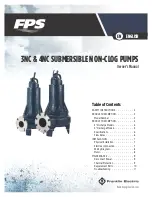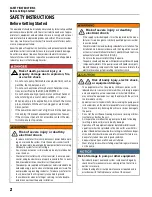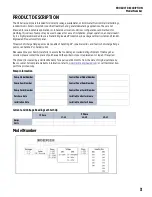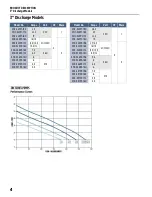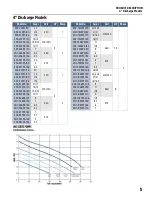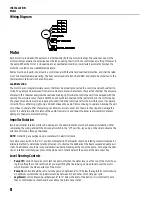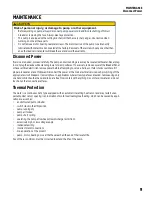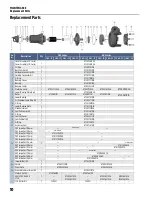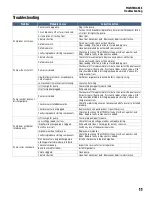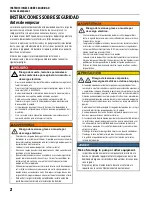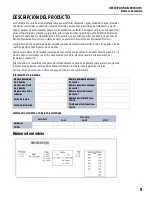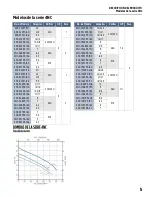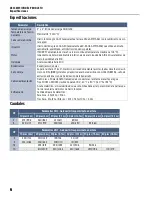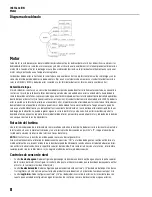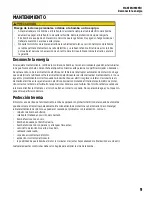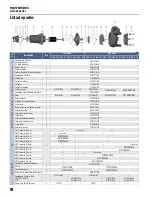
INSTALLATION
Motor
8
Wiring Diagram
Motor
Each motor is provided with heat sensors attached directly to the motor windings. These devices open if the
motor windings experience excessive heat, thereby opening the circuit in the control panel, cutting off power to
the pump. When the motor is stopped due to an overheated condition, it will restart automatically when the
motor has cooled to an acceptable temperature.
Pumps must be properly connected to a control panel with thermal and overload protection, and shall be rated
or set to a maximum ampere rating. The heat sensor leads are BLACK and RED and should be connected to the
thermal sensor terminals in the control panel.
Leak Detection
The motor has an integral moisture sensor that must be properly connected to a control panel with seal-fail cir
-
cuitry. The pump can be removed from service when moisture is detected in the seal-fail chamber. The presence
of water in this chamber energizes the seal leak warning light inside the control panel (if so equipped with this
option). The moisture sensor lead is WHITE, and should be connected to the seal terminal in the control panel.
The green ground wire must be properly grounded inside the control panel for the moisture sensor to operate
correctly. This is a Warning Light only, and will not keep the pump from continuing to operate. Allowing the unit
to continue to operate after the warning can allow moisture to enter into the motor housing and damage the
motor. It is vitally important to remove the pump from service and repair the lower seal assembly to prevent
damage to the pump motor and wiring.
Impeller Rotation
Improper impeller rotation will result in damage to the pump. Rotation must be checked at installation. After
completing the wiring and with the disconnect switch in the “off” position, lay pump on the side to observe the
direction of rotation through the intake.
NOTE:
Contacting an energized pump could result in electrical shock.
Turn disconnect switch to the “On” position momentarily. The impeller should be rotating counterclockwise. An
alternate method to determine rotation direction is to observe the kickback of the freely suspended pump as it
starts. The kickback should be in counterclockwise direction looking at the top of the pump. To change the direc
-
tion or rotation, interchange any two of the white, red, or black wires of the pump at the disconnect box.
Level Sensing Controls
•
Pump Off
Control: Should be set to turn the pump off when the water level is at the top of the motor hous
-
ing. By setting the control at this point you are utilizing the liquid being pumped to help cool the motor
which improves the life expectancy of the motor.
•
Pump On
Control: Should be set to turn the pump on between 6" to 12" below the Lag/Alarm control device.
An optimum cycle for these products would be between 2 to 3 minutes of run time per cycle.
•
Lag/Alarm
Control: Should be set between 6" to 12" below the inlet of the station. It is important to note
that no control device should ever be set above the inlet of any station.

